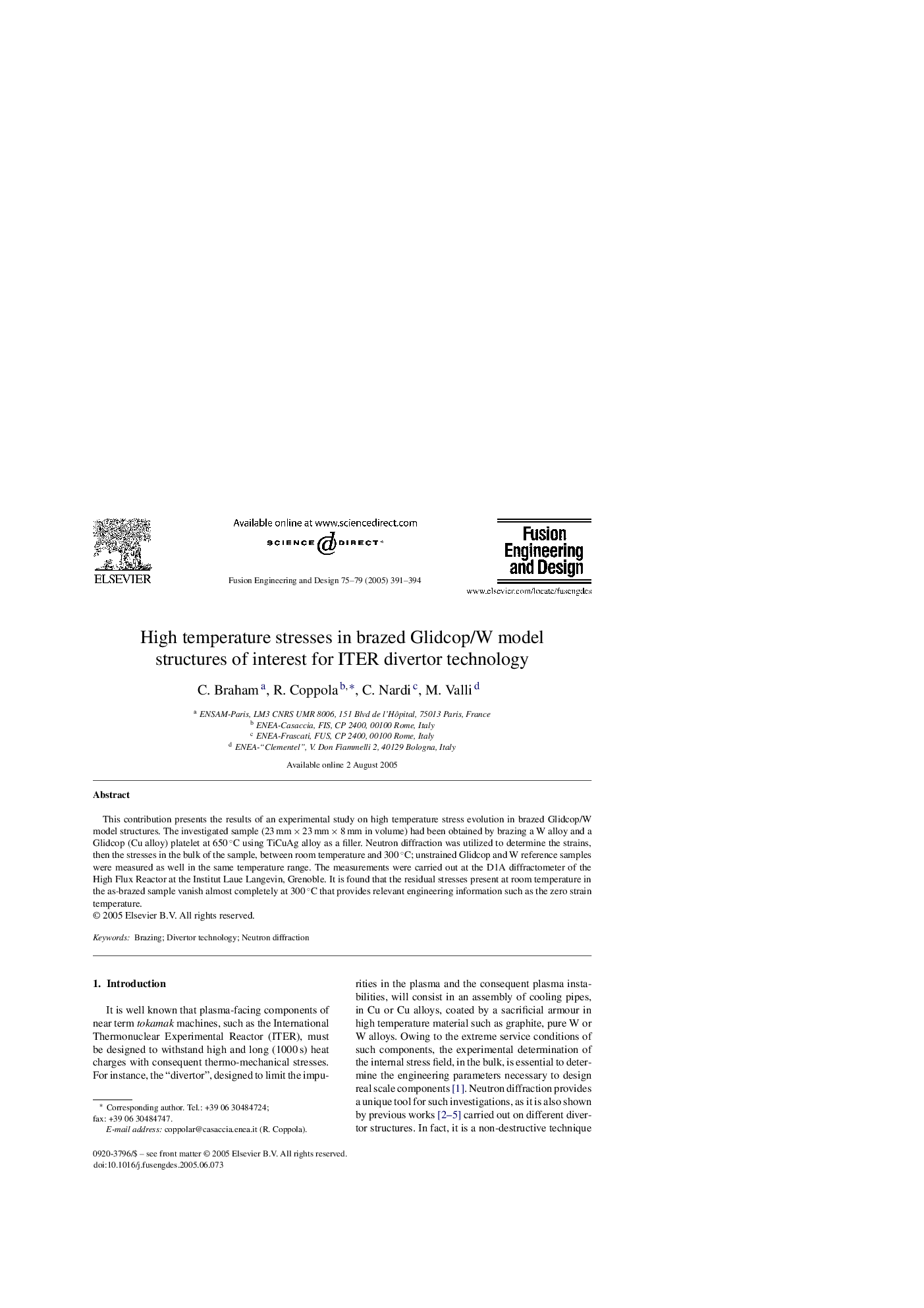| Article ID | Journal | Published Year | Pages | File Type |
|---|---|---|---|---|
| 9638260 | Fusion Engineering and Design | 2005 | 4 Pages |
Abstract
This contribution presents the results of an experimental study on high temperature stress evolution in brazed Glidcop/W model structures. The investigated sample (23 mm Ã 23 mm Ã 8 mm in volume) had been obtained by brazing a W alloy and a Glidcop (Cu alloy) platelet at 650 °C using TiCuAg alloy as a filler. Neutron diffraction was utilized to determine the strains, then the stresses in the bulk of the sample, between room temperature and 300 °C; unstrained Glidcop and W reference samples were measured as well in the same temperature range. The measurements were carried out at the D1A diffractometer of the High Flux Reactor at the Institut Laue Langevin, Grenoble. It is found that the residual stresses present at room temperature in the as-brazed sample vanish almost completely at 300 °C that provides relevant engineering information such as the zero strain temperature.
Keywords
Related Topics
Physical Sciences and Engineering
Energy
Energy Engineering and Power Technology
Authors
C. Braham, R. Coppola, C. Nardi, M. Valli,
